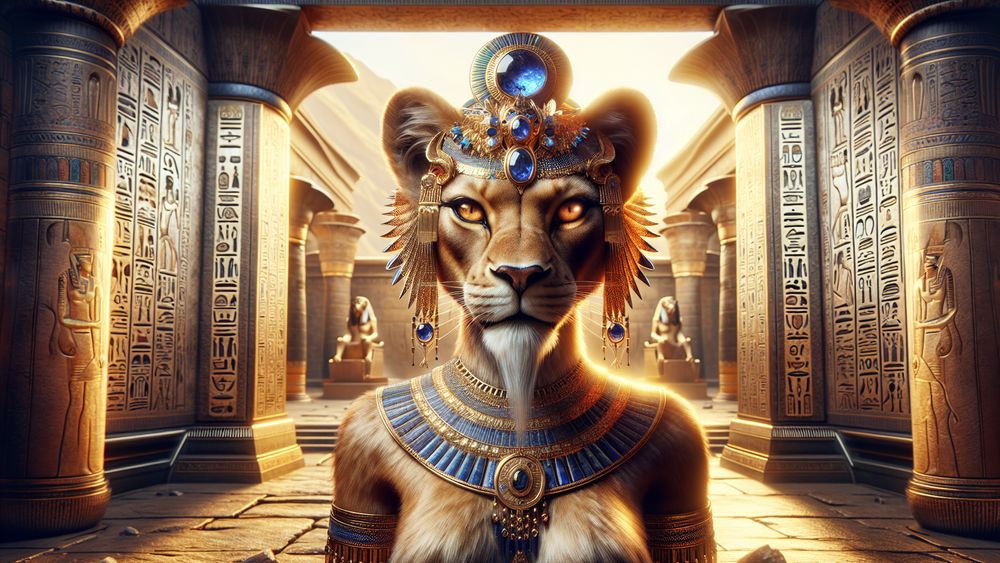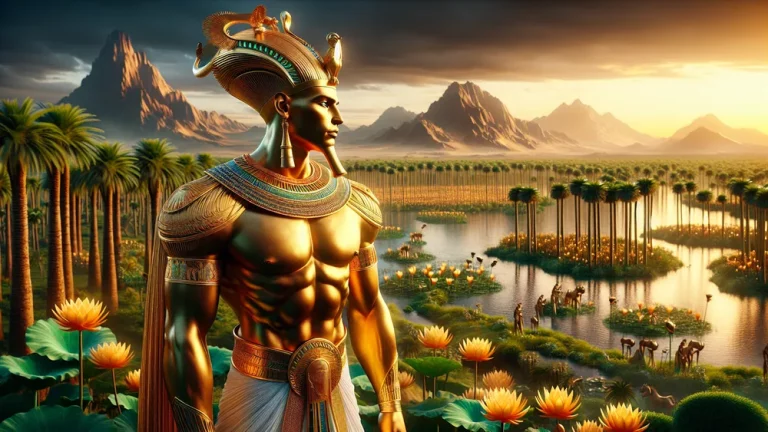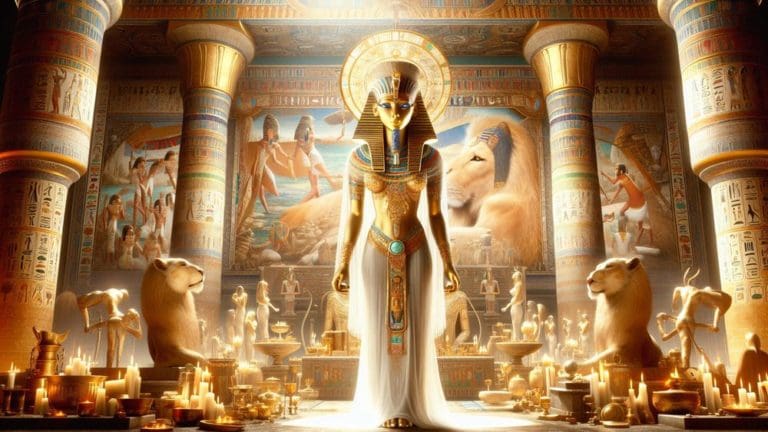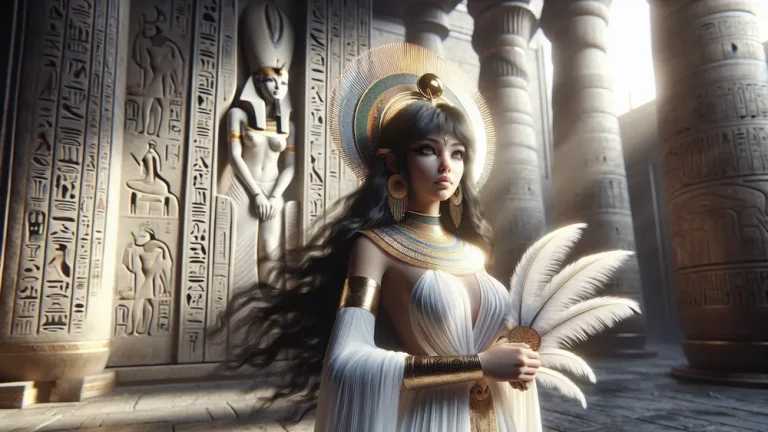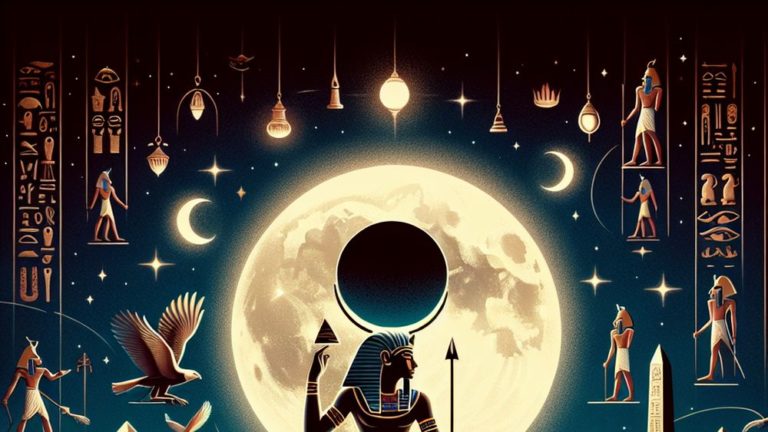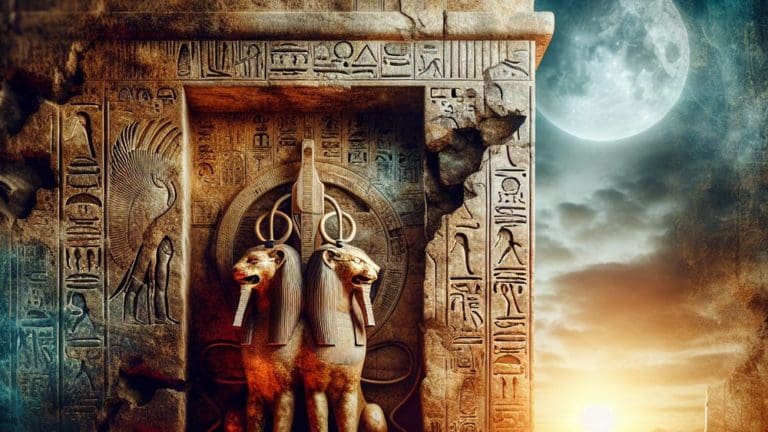Sekhmet: Ancient Egyptian Goddess Of War And Healing
So, we’ve got Sekhmet. She’s a bit of a puzzle in the world of ancient Egyptian gods and goddesses. On one hand, she’s all about war, which means she’s pretty tough and doesn’t back down easily. On the other hand, she’s into healing, which is kind of the opposite. It’s like she’s playing two roles at once. Picture her as a lioness. That’s how the Egyptians saw her.
Key Points:
- Sekhmet is an ancient Egyptian goddess of war and healing, known for her dual nature of fierceness and compassion.
- She is often represented as a lioness, symbolizing both protection and destruction.
- Sekhmet’s name means the powerful one, reflecting her role as a warrior goddess and healer.
- Ancient Egyptians built temples and performed rituals to honor and appease Sekhmet for her blessings and protection.
- Sekhmet’s influence transcends time and culture, with modern practitioners still worship and honor her for her power and guidance.
- She is compared to goddesses in other mythologies, like Kali from Hindu beliefs, for their shared themes of destruction and protection.
- Sekhmet’s story involves a unique twist where she transforms from a bringer of destruction to a source of healing after drinking red beer, illustrating her complexity and duality.
Lions are both caring and ferocious. They look after their own but can also be pretty scary when they need to be. People back then really cared about Sekhmet. They built huge places for her and did special rituals to make sure she was happy. Looking into Sekhmet’s story helps us see how the folks in ancient Egypt saw the world.
They saw that sometimes life can be tough and sometimes it can be gentle. And for them, Sekhmet was the perfect example of that balance.
Who is Sekhmet?
When we jump into the world where ancient Egyptian myths live, Sekhmet grabs our attention. She’s no ordinary figure. Her story and powers shine bright, mixing fear and respect. We’re about to get close and personal with this goddess who brings together war and healing like no other.
The Legend and Power of Sekhmet
In the heart of Egyptian tales, Sekhmet shines bright. She’s a mix of healer and warrior, which sounds unusual but totally makes sense when you think about it. Picture a lioness, which is exactly what she’s linked to. This mighty animal represents her well because it’s both fearsome and nurturing.
Sekhmet’s got this incredible balance of being able to bring down her foes and then turn around and heal her allies. It’s like she controls both sides of the coin – war and wellness.
- Her name spells out “mighty,” which is spot-on for her.
- People would call on her when they needed protection or when sickness was knocking at their door because they knew she could handle it.
- You can spot Sekhmet easily in art. She’s the one with the head of a lioness and a sun disk crowning her. This ties her to Ra, the sun god, which is a pretty big nod to her importance and strength.
- There’s this story where she comes to life from the fire in Ra’s eye. He was looking for a way to teach humans a lesson for their wrongdoings, and boom, Sekhmet enters the scene. This tale really drives home how she’s seen as this necessary force for keeping everything in balance.
So, while it may seem like Sekhmet is all over the map with her roles, it actually fits together perfectly.
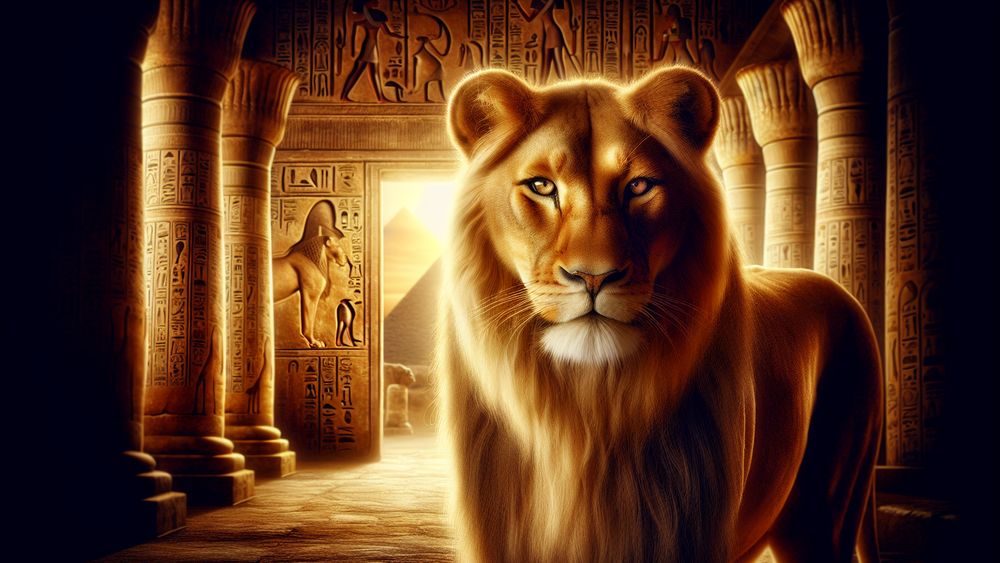
She’s a guardian and a healer, which makes her absolutely essential in the eyes of the ancient Egyptians. They saw her as this powerful entity that could both cause and cure chaos, which is quite the portfolio for any deity.
Sekhmet is a powerful and essential deity for the ancient Egyptians, known for her dual roles as a guardian and healer, which perfectly balance chaos and order in the world.
Sekhmet’s Origins and Family Ties
So, Sekhmet. She’s kind of a big name in the ancient Egyptian pantheon. Picture this: she literally bursts into existence from the eye of Ra, the sun god. That’s her dad, and he’s kind of a major player. He’s all about the sun and creation and being in charge. Now, when Sekhmet comes onto the scene, she’s his anger personified. She’s here to lay down the law and bring about justice.
But that’s not where her story ends. Aside from being this fierce warrior goddess, she’s got a softer side. She ties the knot with Ptah, the god who’s all about crafting and building. They’re quite the power couple. Together, they have a son, Nefertum. He’s the god of healing and beauty which is pretty neat when you think about it. From destruction and war comes healing and beauty.
It’s like a full circle. This family dynamic is super interesting because it shows us how interconnected everything is. Sekhmet isn’t just about destruction. Through her relationships, we see the balance of creation and healing in her character. It’s a reminder that there’s always another side to the story.
The Dual Nature of Sekhmet
Sekhmet is all about that balance between making and breaking. It’s kind of like she’s playing two roles at the same time. Let’s take a closer look at how she manages to be both the storm and the calm.
Protector and Destroyer: Sekhmet’s War Aspect
Sekhmet really brings the heat when it comes to war. She’s all about that strength and fierceness which, honestly, you’d totally expect from someone who’s literally called “the powerful one.” She’s got this job where she protects the pharaoh and Egypt, which is no small feat. Imagine being the go-to for keeping an entire country and its ruler safe. That’s Sekhmet for you.
Her stories are filled with moments where she’s basically saying, “Not on my watch,” to anyone trying to mess with the divine order or the pharaoh’s rule. And while she’s got this scary side that can bring about destruction, it’s really all about keeping the peace and making sure everyone’s playing by the rules. Her look is pretty iconic too. Sekhmet is often shown as a lioness, which is perfect for her.
It’s like, “Hey, I’m both a fearsome hunter and a protective mom, so don’t test me.” This lioness vibe she has going on is a huge part of her war and protection gig. Plus, she’s often seen with a solar disk on her head which ties her to Ra, the sun god and king of all gods.
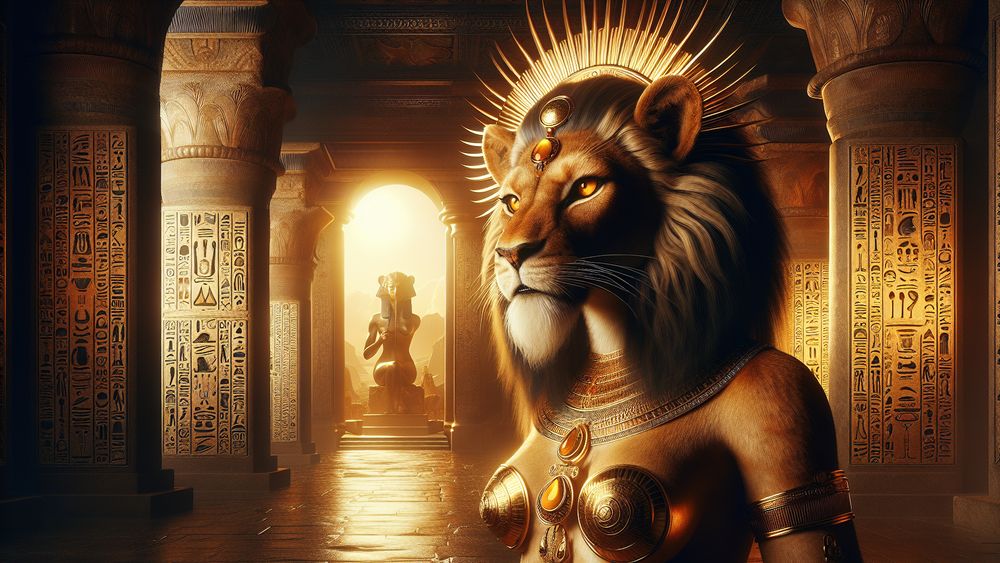
This connection isn’t for show; it’s a big sign that she’s a major player in keeping the world safe and in order. So when it comes to war and protection, Sekhmet is the goddess you want on your side.
- Sekhmet’s name means “the powerful one,” which directly relates to her capabilities as a warrior goddess.
- She was often invoked before battles for her blessings and protection.
- Ancient depictions show Sekhmet holding an ankh, symbolizing her ability to grant life after defeating chaos.
- Temples dedicated to Sekhmet featured statues that represented her protective and destructive aspects.
- The Festival of Drunkenness was celebrated in her honor to appease her wrath and reestablish harmony.
Healing and Restoration: Sekhmet’s Benevolent Side
Sekhmet, while known for her might in battle, shines too as a beacon of healing and care. The ancient Egyptians looked up to her for this very balance. She could bring sickness yet also had the power to take it away. This made her a key figure for anyone seeking health and protection.
Stories tell us that when plagues hit, people turned to Sekhmet. They performed rituals, hoping to calm her and bring out her gentle side. These acts were full of hope for her mercy and healing touch. Priests and followers wore amulets with her image, believing these would shield them from harm and illness.
This side of Sekhmet, so full of compassion and healing, really puts into perspective how the Egyptians saw the world around them. They saw the gods as complex beings, capable of great wrath but also great kindness.
| Aspect | Role | Examples |
|---|---|---|
| Destructive | Brings war and sickness | Starts and stops epidemics |
| Protective | Guards the pharaoh and Egypt | Fights off threats with ferocity |
| Healing | Fixes what’s broken | Rituals that heal and protect |
| Restorative | Makes well and whole | Uses charms for health and safety |
In every tale and ritual, Sekhmet’s power to heal and to harm weaved through the lives of those in ancient Egypt.
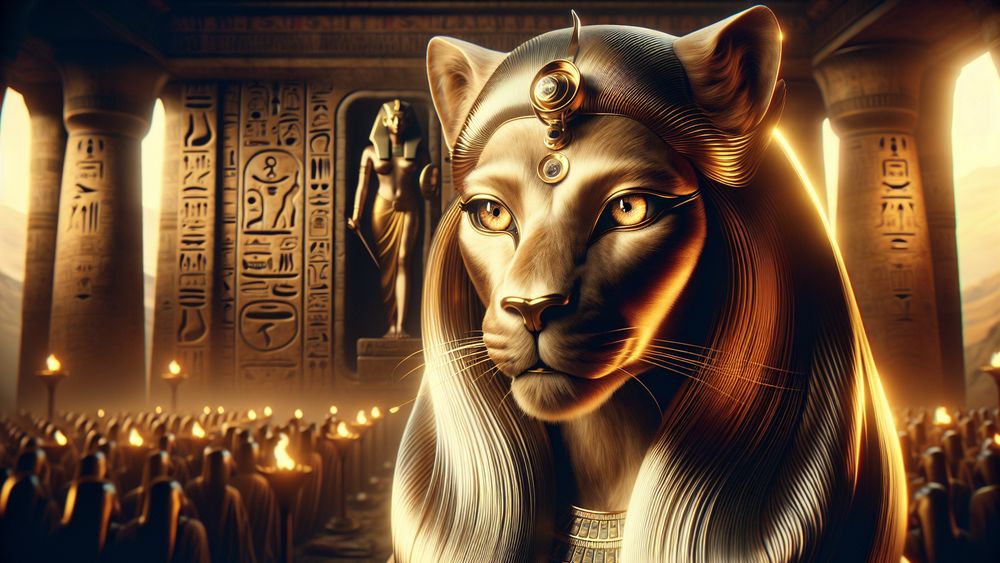
They saw her as a guardian, a healer, and sometimes, a necessary force of nature that could change their lives in an instant. This duality, so central to her being, teaches us about balance and respect for both the light and dark sides of existence.
Sekhmet’s dual nature as a healer and bringer of harm teaches us about the importance of balance and respect for both light and dark aspects of life.
Worship and Reverence of Sekhmet
So, we’ve dived into Sekhmet’s story. Her power and her roles shine bright, from where she comes from to the legends that surround her. Now, let’s shift gears. We’re heading into how people back then showed their love and respect for this mighty goddess. They had ways, so many ways, to say “we see you, we honor you.”
Festivals and Ceremonies in Sekhmet’s Name
When it comes to honoring Sekhmet, ancient Egyptians didn’t play around. They had this big party, the Festival of Intoxication. Imagine a day where everyone’s goal is to drink so much beer that they almost forget their own names. But here’s the twist: they did it for a good cause.
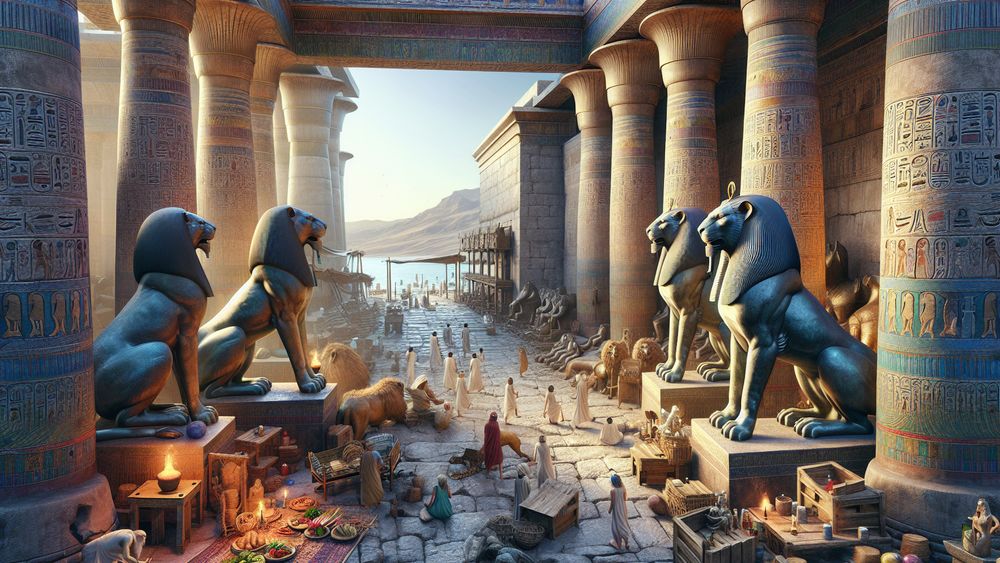
This festival was all about trickery and cleverness, where beer got a makeover to look like blood. Why? To remind Sekhmet of that one time she nearly wiped out humanity but got so drunk on red beer she gave everyone a break instead. So, every year, people got together for a wild time, hoping to keep Sekhmet’s chill side around. They danced, sang, and drank under the watchful eyes of her statues.
It was their way of saying, “Please, keep the peace and health coming our way.” And it wasn’t a small affair. Temples buzz with activity, and everyone aimed to please Sekhmet while having a blast.
- The Festival of Intoxication took place where Hathor was worshipped, which is pretty fitting if you think about it.
- Red ochre dye on clothes was a must-have fashion statement for the day.
- Food and drink for Sekhmet statues meant even the goddess got to join in on the fun.
- Hymns and praises for Sekhmet filled the air, because what’s a party without some good tunes?
This mix of fear and fun, of hoping for the best while remembering the worst, kept everyone on their feet. It was their way of keeping balance and harmony, which, when you think about it, is pretty smart.
The Festival of Intoxication was a clever and fun way for ancient Egyptians to honor Sekhmet while enjoying a wild party with a serious purpose.
Sekhmet’s Influence Beyond Ancient Egypt
The story of Sekhmet, while ancient and rooted in the past, doesn’t stay there. It travels. It reaches places far from where it started. Her legacy isn’t stuck in time. It moves, grows, and touches the modern world in ways that are both surprising and meaningful. We see her influence today, and it’s strong.
Sekhmet in Modern Culture and Religion
Today, Sekhmet still walks with us. You find her in books and movies, where she’s all about power and healing. She’s more than a myth; she’s a symbol. People see her and think of strength and protection. This isn’t by chance. Her story sticks because it’s so full of life and meaning. In the world of spirituality, especially for those who follow neopagan paths or Kemetic Orthodoxy, she’s very much alive.
They don’t simply remember her; they talk to her, make spaces for her in their homes, and look for her guidance. These followers, they’re doing something old but in a new way. They gather, make offerings, and hope for her blessings, much like the ancient Egyptians did. Yet, it’s all happening now, in our time. This connection spans thousands of years and yet feels so immediate and real.
Sekhmet’s legacy is powerful and ongoing, touching everything from our deepest spiritual practices to the stories we tell for entertainment. It’s quite something, how she remains so present and influential after all this time.
Pantheon of All the Egyptian Mythology Gods
So, we’ve got this huge family of gods and goddesses in Egyptian mythology. It’s like a never-ending story where each character has their own special power and backstory. Imagine a world where the sun literally takes a boat ride across the sky. That’s Ra for you, doing his daily commute. Then there’s Isis, who’s all about that magic and motherly love.
She even managed to piece her husband back together after a rather unfortunate series of events. This crowd of divine beings, they’re more than just names and faces. They’re the Egyptians’ way of making sense of everything around them, from why the sun rises and sets to how to bring good luck and keep away the bad vibes.
FAQs
1. How did Sekhmet become a goddess of healing and war?
In the heart of ancient Egyptian tales, Sekhmet’s story begins. The sun god Ra, her creator, needed a powerful force to correct humanity’s wrongs. Thus, Sekhmet came into being. She was this force, mighty and fearsome. Yet, it’s her unique power that sets her apart. Not simply for destruction, but for healing too. This twist in her nature makes her so special.
2. What are the most famous myths involving Sekhmet?
Sekhmet’s tales grab attention, especially when we talk about her origins. Picture this: the sun god Ra crafts her as a tool for retribution against humans straying off the path. Yet, the narrative takes a sharp turn. Instead of ending in chaos, it shifts towards healing after Sekhmet drinks beer dyedm red, thinking it’s blood.
3. Can Sekhmet be compared to any goddesses in other mythologies?
Absolutely, when we look at Sekhmet, we see a figure that echoes through many cultures. Take Kali from Hindu beliefs. Much like Sekhmet, Kali embodies the power of destruction and protection. They both carry this incredible balance of tearing down and guarding, which isn’t something you stumble upon every day. It’s a unique blend that makes them so special and so respected in their respective mythologies.
4. How do modern practitioners worship or honor Sekhmet today?
Today, people still reach out to Sekhmet. They do so with rituals and offerings that feel like a nod to the past. They talk to her, sing for her, and set up special spots in their homes where they can feel close to her. It’s all about keeping it real and heartfelt. They use music that stirs the soul and words that come straight from the heart.

